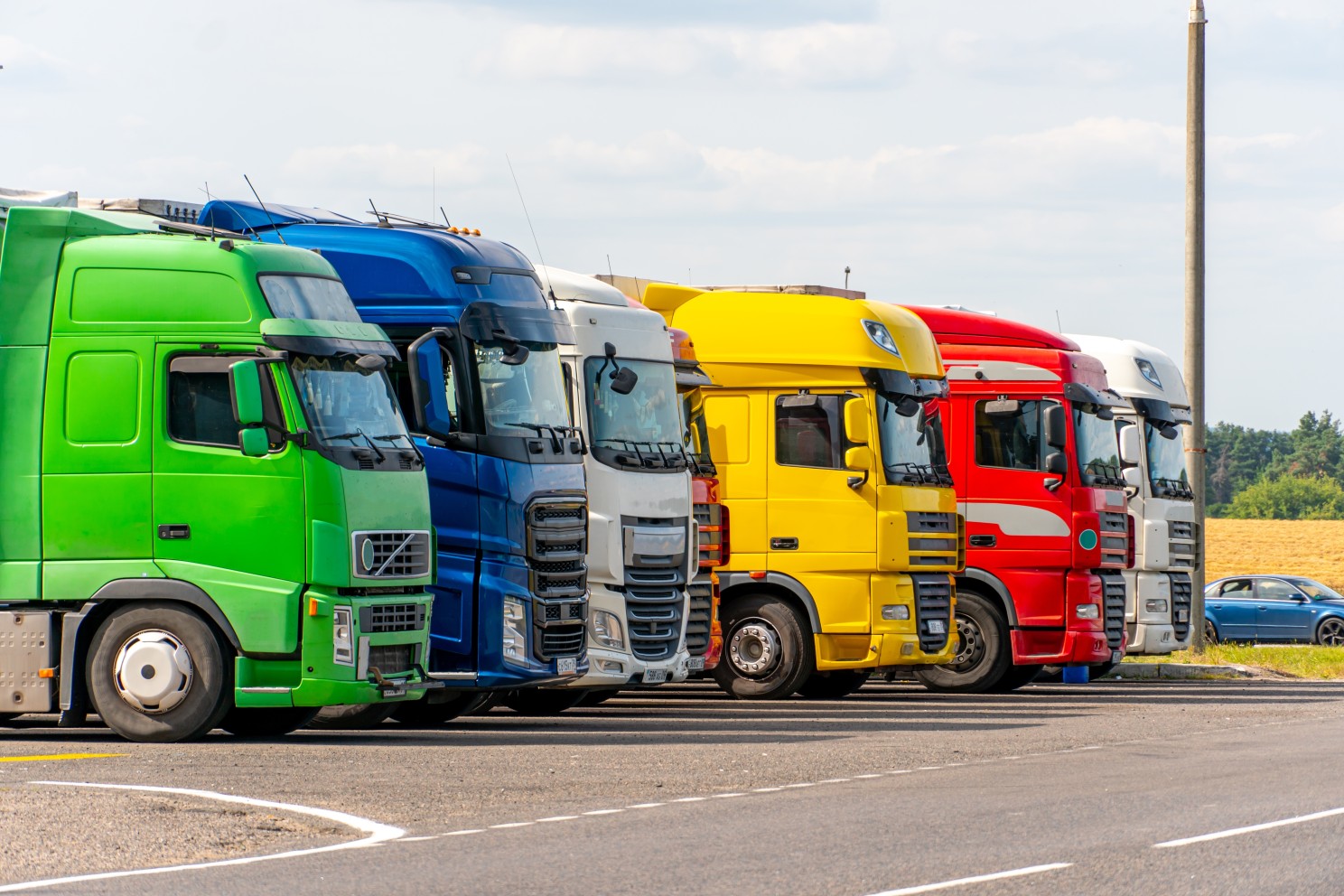
Susie Jones
Cómo abordar la diversidad de conductores en el sector
Creado: 21/08/2024
•
Actualizado: 21/08/2024
Si le pidiéramos que describiera a un camionero, su respuesta podría reflejar la imagen estereotipada de un hombre blanco de edad avanzada. ¿Es esto cierto? Tradicionalmente, el sector del transporte por carretera ha estado dominado por los hombres. A lo largo de los años, el sector se ha diversificado y ha abierto oportunidades a mujeres y personas de distintas edades y procedencias. La diversidad está creciendo, pero retos externos como el Brexit y la pandemia lo han stunado.
Las mujeres en la industria
A pesar de un déficit de hasta 100.000 conductores de vehículos pesados en el Reino Unido, sólo entre el 1% y el 3% de los camioneros son mujeres. Entonces, ¿por qué no se apuntan más mujeres a la vida en la carretera?
La seguridad: Se calcula que el 60% de las camioneras se han sentido inseguras en el trabajo. Muchas han expresado la necesidad de aparcar bajo una luz, planificar sus paradas y llevar spray de pimienta.
Tecnología y equipamiento: Ergonómicamente, los camiones se construyeron para los hombres. En el pasado, a las mujeres les resultaba difícil alcanzar los mandos, ajustar los asientos y los aspectos físicos del trabajo. Sin embargo, los avances tecnológicos hacen que el esfuerzo físico no sea un problema. La mayoría de los camiones modernos tienen ahora dirección asistida y cajas de cambios automáticas para facilitar las cosas.
A pesar de estos contratiempos, las mujeres hacen oír su voz e imponen cambios en el sector. Conductoras como Jodi Smith son valiosas defensoras del sector. Jodi comparte sus experiencias en Internet y demuestra que este sector no es sólo un mundo de hombres.
"Conducir un camión no es cosa de hombres. ¡Puedo hacer este trabajo con un juego completo de acrílicos! Es bastante físico, pero no es duro", afirma Jodi cuando hablamos con ella allá por 2021. Con siete años de experiencia a sus espaldas, Jodi sigue abogando por que más mujeres se unan a la comunidad de transportistas.
Un resultado que podría conducir a carreteras más seguras - Los datos del Instituto Americano de Investigación del Transporte muestran que las mujeres son conductoras comerciales más seguras. Los hombres tienen un 20% más de probabilidades de sufrir un accidente que las mujeres.

Diversidad de edades en el sector
Según la Oficina Nacional de Estadística, la edad media de los conductores de camiones es de cuarenta y ocho años, y el 47% de los camioneros del Reino Unido tienen más de cincuenta años y están a punto de jubilarse. Estas estadísticas, sumadas a la actual escasez de conductores, sugieren la necesidad de contar con conductores más jóvenes en el sector.
Es más fácil decirlo que hacerlo; muchos conductores jóvenes se enfrentan a los siguientes retos:
Formación: Obtener el permiso de conducir comercial puede costar hasta 2.000€.
El seguro: Aunque la edad mínima para conducir un camión en el Reino Unido es de 18 años, muchos tienen dificultades para conseguir un seguro.
Experiencia: Algunas empresas quieren contratar a conductores con experiencia, lo que puede suponer un contratiempo
Condiciones: La vida de los camioneros puede ser exigente: las largas jornadas y el tiempo que pasan lejos de sus seres queridos pueden ser un factor disuasorio. Sin embargo, la vida en la carretera tiene muchas ventajas, como la comunidad, los viajes, el salario y la estabilidad laboral.

Las empresas que buscan conductores pueden beneficiarse de la contratación de camioneros más jóvenes. Son más propensos a adaptarse a una industria en constante cambio. Además, aprenden rápido y acogen con agrado los avances tecnológicos. El aumento del número de conductores jóvenes se traducirá en un menor índice de rotación, lo que reducirá los costes de las empresas. También garantizará que el sector satisfaga la creciente demanda de bienes y servicios.
Sin embargo, ¿cuáles son los inconvenientes para usted si es un conductor de edad avanzada? Algunos sugieren que la edad afecta a las capacidades físicas y cognitivas, lo que repercute en la capacidad de conducir con seguridad. Estas capacidades son vitales para los camioneros, ya que tienen que hacer frente a largas jornadas, exigencias físicas y situaciones de estrés.
La FMCSA ha abordado estas preocupaciones. La normativa obliga a los conductores mayores a someterse a frecuentes exámenes médicos y evaluaciones de la conducción. Recientemente, se informó de que un camionero de 90 años de Sheffield seguía conduciendo tras recibir el alta médica. Muchos argumentan que los conductores mayores aportan décadas de experiencia y conocimientos, lo que sugiere que, si están sanos, no debería haber ningún obstáculo para su contratación.
¿Cómo puede la diversidad resolver la actual escasez de conductores?
En 2022, la Oficina de Asuntos de los Veteranos concedió 100.000 libras a la organización benéfica Veterans into Logistics. Esta organización ofrece a los veteranos la oportunidad de convertirse en conductores de vehículos pesados. La financiación ha permitido a la organización aumentar significativamente su formación anual, aumentar el número de empleados y triplicar la formación disponible. XPO, ASDA y Muller Milk & Ingredients son empresas que contratan activamente a veteranos directamente después de la formación.
Además, ASDA aportó 40.000 libras para contribuir a la formación continua. El apoyo a organizaciones benéficas como Veterans into Logistics crea una cultura más diversa dentro de la conducción de camiones, al tiempo que aborda activamente la actual escasez de conductores.
¿Qué se puede hacer para atraer más diversidad?
Contar con una plantilla diversa abre las empresas a diferentes puntos de vista y experiencias. ¿Qué pueden hacer las empresas para atraer a una mano de obra diversa?
Invierta en formación: La formación para educar a los empleados sobre temas como el sesgo implícito, la inclusión en el lugar de trabajo, la prevención de la discriminación y cómo apoyar una plantilla diversa puede tener un efecto positivo.
Invierta en un proceso de contratación inclusivo: Anonimizar el CV de un candidato puede reducir los prejuicios inconscientes.
Promueva una cultura integradora: Comunica a los posibles candidatos cómo abordas los problemas actuales de diversidad e inclusión.
Llegar a los grupos infrarrepresentados en esta industria.
Promover y acoger una cultura diversa en la conducción de camiones puede beneficiar sustancialmente al sector. No sólo contribuirá a crear un entorno de trabajo más integrador y acogedor, sino que también ayudará a paliar la actual escasez de conductores. Las empresas de transporte tienen la responsabilidad de acoger la diversidad tanto como los conductores.

¿Qué país demanda conductores de camión?
Un informe publicado en diciembre de 2022 sugería que la escasez en Europa se había disparado un 42% de 2020 a 2021. El Reino Unido ocupaba el primer puesto, con 100.000 puestos vacantes. México y China también ocuparon los primeros puestos de la lista: la escasez en México aumentó un 30% y la de China se elevó a un asombroso 140%.
¿Necesitaremos camioneros en el futuro?
La introducción de los camiones autónomos ha hecho pensar a muchos que no hay futuro para los camioneros. Sin embargo, no es así.
Los camiones autónomos se implantarán gradualmente en determinadas regiones. La probabilidad de que esto afecte a la mayoría de los conductores es escasa.
Si los camiones autónomos se implantaran en todo el mundo, seguirían haciendo falta conductores. La demanda de camioneros no hará sino aumentar, ya que hay demasiadas cosas que podrían ocurrir si no hubiera un conductor en la cabina.
¿Cuáles son los estereotipos de los camioneros?
Conocemos la importancia de los camioneros, pero a los ojos de unos pocos, los estereotipos negativos siguen ligados al sector. Esta imagen puede deberse a la tergiversación de los medios de comunicación y, a veces, a unos pocos conductores inexpertos. Pero, ¿cuál es esta imagen estereotipada? ¿Y por qué es errónea?
Sobrepeso - Algunas paradas de camiones ofrecen comida rápida poco saludable, lo que podría dar la impresión de que los camioneros sólo la consumen. Sin embargo, esa no es la norma. Comer sano en la carretera puede ser un reto, pero muchos siguen una dieta equilibrada y hacen ejercicio con regularidad. Consulte nuestros consejos para comer sano en la carretera.
Malos conductores - Un estereotipo que no podría estar más lejos de la realidad. Los camioneros profesionales se toman la seguridad muy en serio. Suelen respetar el límite de velocidad, extremar la precaución en condiciones meteorológicas adversas y dejar mucho espacio entre ellos y los demás conductores.
Todos nos enfadamos en la carretera, y los camioneros no son una excepción. Sin embargo, es injusto atribuir este estereotipo únicamente a los camioneros.
Todos los camioneros son hombres - Los hombres superan en número a las mujeres en este sector; sin embargo, las camioneras están aumentando.



